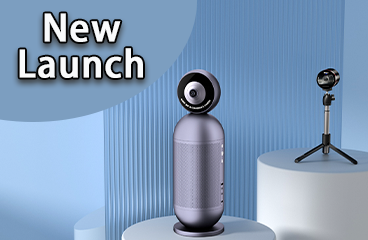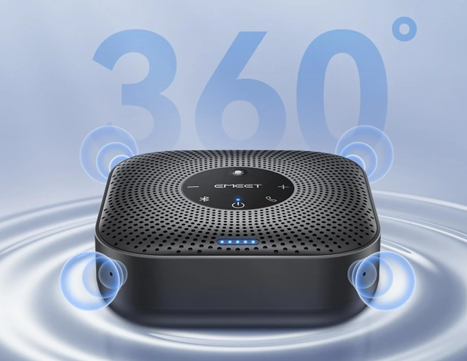In the United States, telemedicine is booming, and with the development of technology, these emerging services are becoming increasingly popular. More and more hospitals and clinics are starting to offer telehealth services. Most of these services are charged. Patients can communicate with doctors at any time and receive telemedicine consultations, and doctors can recommend appropriate treatment plans according to the actual situation of patients. Patients can make an appointment with a doctor in advance and pay a fee or treat the doctor themselves at home. The advantage of this is that it can effectively prevent doctors from losing patients' trust due to over-diagnosis (although rare), and doctors often deliberately ignore one of the factors that lead to the deterioration of patients' conditions. If patients do not receive telemedicine services instead of timely medical treatment, medical resources will be wasted, and many unnecessary medical expenses will be incurred. Medical costs are also the main reason why patients choose telemedicine services. Excessive time and money are spent on the medical process because patients come in late and need to pay more attention to changes in their condition. In January 2022 alone, 38% of patients received care through telehealth. Although down from last year's figure (48%), it's still higher than before the pandemic. The researchers also found that 76% of patients who had a telehealth visit would prefer to continue using it in the future.
Market Size of Telehealth Services
According to market research institutions, telemedicine was worth USD 41.63 billion in 2019. The impact of COVID-19 globally has been unprecedented, with telemedicine experiencing positive demand shocks across all regions. In 2020, the global market grew by 91.7%. According to forecasts, the market will reach USD 396.76 billion in 2027, a compound annual growth rate of 25%.
Why Choose Telemedicine?
Telehealth is nothing new, it's just developing, and if you look closely, many private hospitals in the US offer telehealth services. It can be helpful for the patients to conduct a preliminary consultation, as the doctor can provide a basic understanding of your symptoms, your illness and your concerns. Then the doctors could refer the patient to an appropriate department and receive a complete diagnosis. There are many other benefits and drawbacks of telehealth; please refer to the following:
Telehealth Benefits
1. Provide better treatment options for patients
Most medical institutions are using new technology to improve work efficiency. Therefore, telemedicine can help patients get the best treatment options by using technologies such as video calls. For example: Before administering medication, doctors can use video calls to inquire about the patient's condition and follow treatment recommendations rather than being advised to go to a hospital that specializes in that speciality. Telemedicine is also an issue for the potential customer base, as it can help doctors communicate more effectively with patients.
2. Save time
Telemedicine is difficult for some people but they can still do telemedicine as needed without spending time in the hospital. For example, if your illness requires a referral, and you live near the hospital, if you go to the doctor at night, it won't be easy to go to the hospital at night. Also, you can book an appointment with a specialist in advance, saving you time.
3. Cost advantage
There is typically a lower cost associated with telehealth consultations with doctors than in-person consultations or phone calls. Compared to an in-person visit, the average price for a telehealth visit for acute respiratory infection is $79 instead of $146.
Telehealth Drawbacks
1. Insurers may or may not accept telehealth
We must consider that some insurance companies may accept telehealth as an option offered by a health insurance plan (Insurance Support). It's also difficult for insurance companies to implement their health insurance plans if they don't accept telehealth options. Such programs must meet other requirements, such as ensuring better medical care.
2. Physical examination is limited
The technology of live video communication was relatively recently advanced enough to provide comprehensive medical care. With today's technology, most patients and doctors can conduct high-quality video conferences efficiently. However, some telemedicine doctors may find a virtual appointment insufficient to diagnose or treat their patients.
How to Conduct Telemedicine?
In order to conduct a telemedicine, you will need to sign up with a telemedicine company. To do so, we have selected Teladoc Health to show you the steps to sign up for a telemedicine. With Teladoc Health, you get the technology to connect, the expertise to trust, and the power to improve health for everyone in the world.

How Does Telehealth Works?
Step 1: Set up your account in minutes
Most people download the app or get started online. Then fill out a brief medical history like you would at a doctor's office.
Step 2: Connect yourself with the right medical care
Based on your symptoms, provide general information to the general doctors and they will redirect you to a suitable specialist based on your symptoms. Then conduct a full diagnosis remotely, either audio or video conference.
Step 3: Get peace of mind
After your diagnosis has been completed, your prescription will be available at the pharmacy of your choice, or a further review of your condition from a medical expert.
The online services provide 24/7 on-demand access to virtual doctors and charge a per visit fee or a monthly or annual subscription. These costs are not billed through insurance but are paid directly out of the patient's pocket.
Efficient Telehealth Solutions
The development of society and the continuous progress of medical technology, the development of medical technology has provided a lot of help for patients' health. Now we have received support from many people in medical treatment. Seeing a doctor in the hospital is a tricky thing. Many people come here to see a doctor. There are also better medical equipment and professional technical teams in the hospital to help patients see a doctor. The medical industry needs some conference video equipment to help hospitals. There are two primary forms of remote conference systems: audio and video conference systems.
Audio Conference System
The voice system includes speaker equipment, microphones, speakers, etc. The audio and video system will select different audio and video equipment forms according to the application environment. Audio products are also essential when conducting large-scale video conferences because they can provide participants with better sound quality, allowing them to more clearly understand the cause of the problem and solve the problem. It is recommended to select a high-quality speakerphone product to meet the needs of the audio conference. The EMEET OfficeCore M3 Speakerphone would be recommended as the M3 has 360° voice pickup and initiated suspended mic cavity, 5W speaker and 20-hour long-lasting battery life. This enables doctors to hear all the patient's symptoms and provide an accurate diagnosis.

Video Conference System
Remote video conferencing equipment also needs to be equipped with professional video equipment because when we conduct telemedicine, we need to be a lot more professional to ensure that we can get better treatment. Generally, we need to be equipped with a video camera, and selecting a video conferencing camera, the EMEET SmartCam S600 is the No.1 choice. The S600 is an ultra 4k resolution camera with a pro-grade sensor that reproduces every detail, delivering lifelike, grain-free images. It also has two noise cancellation microphones that relay voice clearly without the disturbance of background noise. Therefore, using the S600 allows doctors to perform a complete and detailed diagnosis without needing physical contact with the patient but still can conclude the diagnosis.

Conclusion
The United States attaches great importance to telemedicine. Therefore, the technology in the medical system is developing very fast, and the telemedicine system allows patients to quickly and conveniently go to the hospital to see a doctor. Telemedicine is using computer technology to replace hospital doctors to complete patient consultation, diagnosis and treatment, and nursing, thereby improving the efficiency of medical services. The United States can achieve two-way communication, remote diagnosis and treatment, patient follow-up, remote training, etc., through telemedicine to improve the medical level of patients and doctors. Everyone in the United States knows telemedicine can significantly save the time and economic cost of patients seeing a doctor. Many patients in the United States are willing to accept telemedicine services, which is one of the fundamental reasons for the development of telemedicine. Patients can get at any time for Doctor treatment and follow-up. At the same time, telemedicine enables patients to receive professional advice and treatment plans from doctors, nurses, and telemedicine experts at home. Therefore, medical resources in the United States are very tight, and hospitals and doctors must learn from the telemedicine system.


